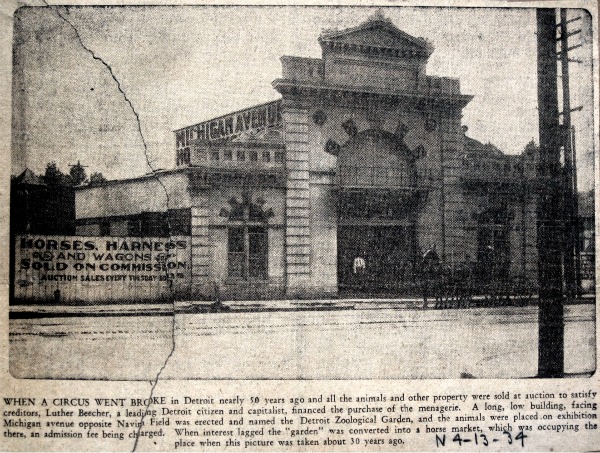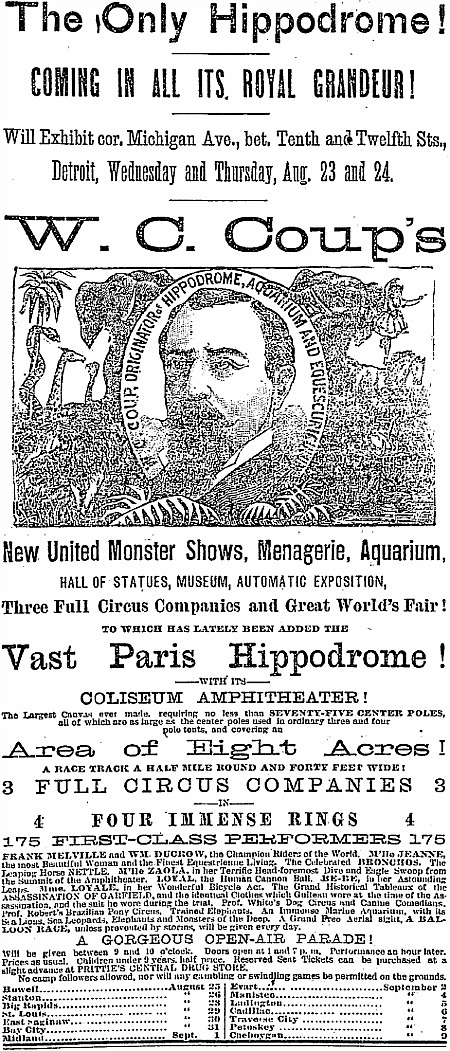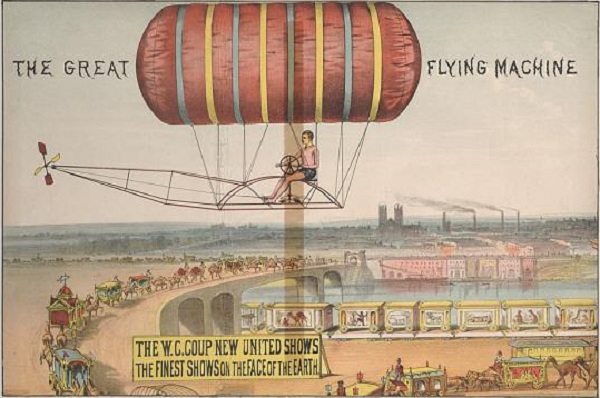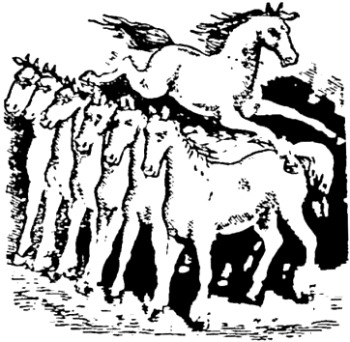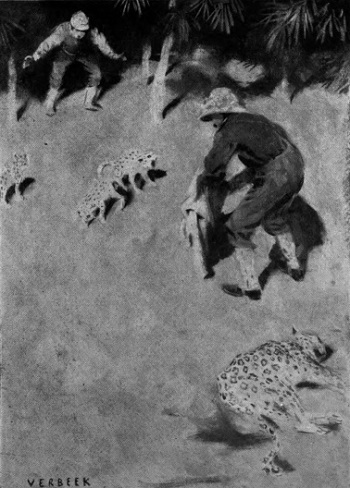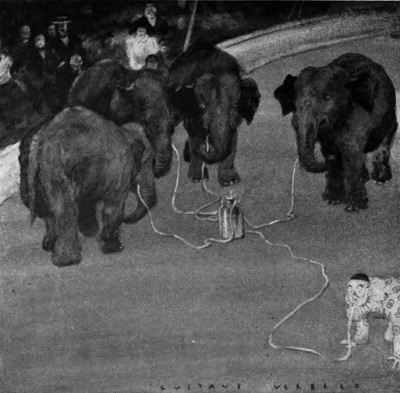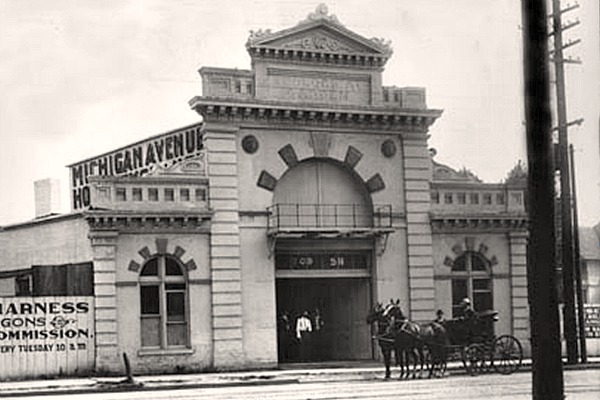
The Detroit Zoological Gardens c. 1906, when it was converted into a horse market.
Photo courtesy of The Detroit News Archives. Used with permission.
For less than a year between 1883 and 1884, Corktown was home to the very first Detroit Zoo. It was a privately-owned enterprise founded by businessmen with apparently no professional experience in animal husbandry. The Detroit Zoological and Acclimatization Society filed for incorporation on June 20, 1883, stating that it was established "for the purpose of exhibiting all manner of wild and other animals, plants, minerals, and other objects of natural history of every kind." It was founded with $10,000 in capital stock and listed the following men as its officers:
- Dr. Theodore Van Hensen Law, President; practicing physician.
- Harrie R. Newberry, Vice-President; also an officer of the Detroit Steel and Spring Works.
- Anthony Grosfield, Treasurer; owned a hardware store at 981 (3363) Michigan Ave.
- Charles Burrows, Treasurer and Manager; owned a general store at 1351 (4333?) Michigan Ave.
- Alexander DeLano, president of the Detroit Steel and Spring Works.
- J. Logan Chipman, Judge of the Superior Court, later elected to Congress.
- Albert H. Raynor, co-owner of the printing company Raynor & Taylor.
As mentioned in an earlier post, there doesn't seem to be any connection between the demise of William C. Coup's bankrupt circus and the zoo on Michigan Avenue. Although the zoo was built on Luther Beecher's circus grounds--where Coup's animals were auctioned off--that location was not the Zoological Society's first choice. An article in the Detroit Free Press on May 27, 1883 mentioned that the group first attempted to lease land next to the Art Loan Building on Larned Street downtown. But on June 15, the association signed a lease with Luther Beecher for the space on Michigan Avenue.
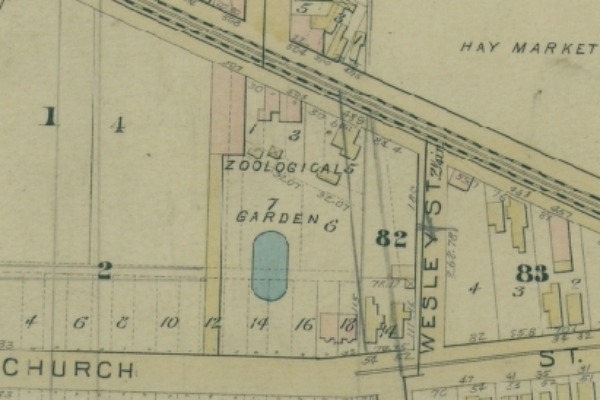
The zoo grounds from an 1885 atlas of the city. (Source)
On July 11, 1883, the Free Press reported:
A number of the animals for the Detroit Zoological Garden have arrived and are now domiciled in a temporary structure on the Michigan avenue circus grounds. The animals consist of a lion called "The Duke of Wellington," a lioness, a deer and a hyena. The garden will be located on the grounds and work on the structure will be begun at once.Three days later, zoo officials left for New York in order to obtain more animals.
The new brick building for the Zoological Garden was designed by Henry Engelbert, an architect who had previously lived and worked in New York City. His best known accomplishment in Detroit is probably St. Albertus Church in Poletown.
The zoological building was estimated to cost $6,000 to construct. The masonry was done by Albert G. Hollands, and the roof by the firm Sparks & Hageman. Construction began July 14, 1883 and was completed by the end of the following month. The structure measured 50 feet wide by 120 feet deep and held the zoo's offices, zookeeper's living quarters, ticket office, waiting room, aquarium, aviary, and winter shelter for some animals. South of the main building along the western edge of the lot was a narrow, 160-foot-long structure that held steel cages for carnivorous animals. South of that was a structure of similar size which contained the pens for less dangerous beasts. Along the perimeter of the property was a 20-foot-wide macadamized walkway that was flooded in the winter for ice skating. The lot was surrounded by a ten-foot fence, and in the center of the garden was a miniature artificial lake for waterfowl. North of the lake was a band pagoda, and the property was illuminated with electric light.

The approximate boundaries of the Zoological Garden's lot, as
best as I could interpret the contradictory descriptions of it.
Image courtesy of Sanborn Maps.
The opening of the zoo was originally scheduled for August 15, but the date was pushed back at least twice. Most of the animals did not arrive until the end of the month. An August 26 news item mentions a bear cub had arrived, and two days later the arrival of an elk from McKee Rankin's deer park on Bois Blanc ("Boblo") Island. Even a "large snake" captured by a local porter named George Brown was donated to the zoo.
Just before the zoo's opening, the Detroit Free Press published this list of the animals on display (punctuation as in the original):
These comprise huge cages of rare birds of many kinds, a colony of monkeys, two black bears, one cub of the same species, one sun bear, a beautiful animal, one jaguar, one hyena of most unamiable aspect, one superb silver lioness, a fat-tail sheep, the celebrated lion Duke, who has killed three men and evidently "aches" to kill another, a noble elk lately purchased of McKee Rankin, a pair of Cape (African) buffalos, the yak Mollie, so well known to visitors at Central Park, New York, a pair of sacred cattle and calf, and India deer, who would run his spike horns through a man in a second if he could get the opportunity, a boa-constrictor, thirteen and one-half feet long, foxes, badgers, coons, Muscovy ducks, and a pair of camels.The Detroit Zoological Garden finally opened on Wednesday, September 5, 1883. Work had continued throughout the previous night to ensure the date was met, but even then the scheduled opening time of 10am was pushed back to 3pm. Mayor William G. Thompson and the city council attended the opening ceremony. After a brief speech, the mayor declared the Zoological Garden officially open.
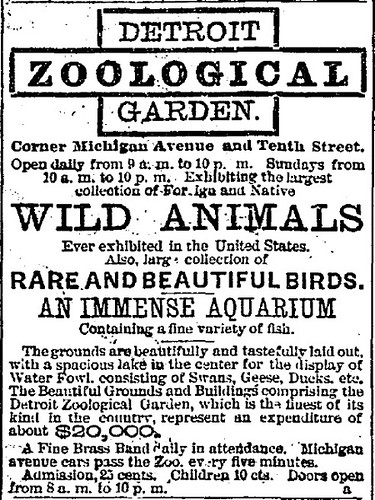
The superintendent of the zoo was businessman Orrin W. DeLano. He was the brother of one of the zoo's investors, Alexander DeLano. Previous to this job, he was a manager at the American District Carriage and Express Company.

Other employees of the zoo as listed in the 1884 city directory included:
- David A. Stoner, zookeeper, lived on site. He previously worked at a lumber yard.
- Louis Lariviere, zookeeper, also lived on site.
- John Fisher, laborer, 342 Prospect St. The year before he was employed by a carpet and upholstery store.
- Martin Smith, laborer, 159 Leland St.
- John P. Fleming, cashier, 230 Mullett. Previously a horse collar maker.
- John Gibson, secretary.
Two weeks after the zoo opened, it was announced that the Canadian-born veterinarian Dr. Alexander John Chandler was appointed Veterinary Surgeon of the organization. Chandler later moved to Arizona, where in 1912 he would found the town that now bears his name.
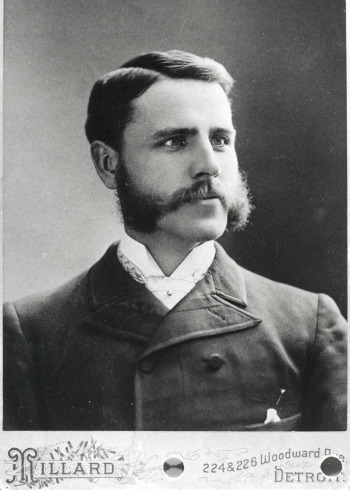
Dr. Alexander John Chandler (1859-1950)
Photo courtesy of the Chandler Museum.
A Human Exhibit
It was not uncommon for zoos in the late nineteenth and early twentieth centuries to display "primitive" people. The Congolese pygmy Ota Benga, displayed at the Bronx Zoo, may be the most famous example. On November 11th, 1883, the Detroit Free Press announced, "Besides the numerous wild animals, the birds and the fishes, there is a band of Apache Indians who give realistic representations--four times a day--of their corn dance, the scalp dance and the war dance."
It was around this time that James H. Kelly, the advertising agent for Adam Forepaugh's Circus, was taken on by the zoo to handle its promotion.
On November 13, 1883, the Free Press published the following story about the zoo's Apache exhibit:
Ten days later, the same paper reported:The Lost Tribes
Mayor Thompson received a letter yesterday morning from Walter G. Marmon, Laguna, N. M., stating that he had received a letter from Frank Howe, chief and manager of the Pueblos, stating that his partner had skipped with all the funds, leaving himself and his tribe stranded at the Franklin House. He asked for transportation home. Mr. Marmon asked for further particulars.
"Jim," exclaimed an irreverent reporter, as he met James H. Kelly, Forepaugh's agent, later in the day, "have you got Frank Howe and his Pueblos up at the 'Zoo,' passing them off upon an unsuspecting public as bloodthirsty Apaches?"
"The confounded Indians are there, but Howe isn't. He's in Chicago making arrangements to exhibit them there. Of course they're Apaches. The Apaches were all broken up into small tribes in 1642, and--"
"Never mind the historical lecture! What are you going to do with them?"
"Do with them? Great Scott! I can't do anything with them. They don't understand a word of English, and I can't make them do anything. The place was full yesterday, and I wanted them to get up and shake themselves so that the people could see them, but they sat there like a row of tobacco signs, and all I could get out of them was a grunt. I wish Howe would come back. I'd either make them dance or get out."
James H. Kelly received a letter yesterday from one Pratt, Governor of the Pueblo Indians, of Lacuna, N. M., inquiring as to the whereabouts of that portion of the tribe that were recently at the Zoo. James replied that they are with their manager, Howe, in Chicago.I have not found any reference to the Pueblos/Apaches in any later Detroit papers.
Additions to the Menagerie and Promotional Schemes
A few more animals were added to the zoo's collection after its opening. An additional lioness was brought in, as well as an animal trainer named Max Caspari. Dr. Eduard Dorsch of Monroe donated two bald eagles in November of 1883. Two months later it was reported that "the latest arrival at the Zoo Garden is the electric eel from Mexico--he is perfectly wonderful. Electricity can be felt at any time coming from his body." Plans to obtain an elephant and a rhinoceros were announced, but never came to fruition.
On Valentine's Day of 1884, both a "sacred cow" and a camel were born at the zoo. The sacred cow lived only two hours.

The camel died two weeks later.
In order to capitalize on the draw of baby animals, a mother and baby African buffalo were brought to the zoo the following April. They proved to be popular, as the Free Press reported, "The ladies were intensely interested in the baby buffalo and went into ecstasies over the 'dear little pet'".
The Zoological Garden seemed to change managers as frequently as it purchased new animals. Orrin Delano resigned his position as manager in December of 1883 and was replaced by Harry K. Long, a circus performer who had previously worked for P. T. Barnum. On February 29, it was reported that the new manger was Garry A. Hough, an actor who lived at 11 Sycamore Street in North Corktown. He was followed by at least one more manager, Clarence S. Yates, formerly of the Detroit and Saline Plank Road Company. He went on to become a reporter for The Detroit Evening News until his premature death in 1889 at the age of 28.
In order to maintain attendance during the winter months, an ice skating rink was opened on the property on December 17, 1883. Contests for "fancy skating" were held, and music was frequently supplied by the Tenth Infantry Band. It was claimed that "upwards of 3,000 persons" visited the zoo and ice rink on New Year's Day 1884, but this is almost certainly an exaggeration. The ice became a popular spot for curling, and was frequented by the Granite Curling Club and the Detroit Curling Club.

Among the zoo's winter promotions was a beauty contest held in February 1884--or, as the Free Press called it, an "alleged" beauty contest. A reporter wrote, "The contest of beauty at the Zoological Garden has failed to materialize to any extensive exhibit of symmetry, grace and embellishment, only three forlorn-looking females with a so-much-a-week expression of countenance occupying the seats reserved for contestants." (2/15/1884)
The End of the Zoo
Despite the impressive attendance reported by the zoo, it was unable to meet its financial obligations. The builder of the Zoological Garden sued the owners in May 1884, followed by the architect in June, for fees owed to them. The ownership of the building was transferred to Wayne County Savings Bank on May 13th, although it was allowed to remain open to the public for two months. Luther Beecher retained ownership of the land and continued to rent the field west of the zoo to traveling circuses.
Just as with the liquidation of W. C. Coup's circus two years before, the animals of the Detroit Zoological Garden were auctioned off under the supervision of Wayne County Sheriff Conrad Clippert. The zoo closed on July 29, 1884 and the property and animals were auctioned off immediately afterward. Although the menagerie was appraised at $4,000, the sale only brought in $1,382.39. Among the bidders were attendees of the Coup auction, including Harry L. Piper of the Toronto Zoological Garden and a representative of the Cincinnati Zoo. The animals remaining at the zoo at the time of the auction included coyote, black bears, sun bears, wolves, leopard, hyena, silver lion, lion, lioness, springbok, deer, elk, African buffalo, camels, sacred cattle, yak, goats, ram, mare, colt, jackass, four raccoons, eight monkeys, rats, white rabbits, pigeons, cockatoos, hawks, parrots, eagles, quails, peacocks, and owls.
Years later, the following explanation for the establishment of the zoo was printed in the Free Press:
The company did not propose to make money out of the enterprise, but sought rather to earn a reputation for the place which would induce the city to buy them out and provide, with greater financial resources, a resort similar in character to the zoological gardens in other cities.
Adaptive Reuse
The structure at 509-511 Michigan Avenue stood for twenty years after the animals left. In December 1884 it was converted into the Dime Roller Rink. The lot behind the building was again flooded and opened as an ice skating rink with a new entrance on Church Street.
By September of 1885, the building was remodeled and opened under new management as the West Side Roller Rink. The proprietor was an electrician named Alfred G. Liggett. Between 1886 and 1887 it operated as the Granite Rink, apparently after the Granite Curling Club. The new lessee was Thomas Hyland.

In 1888 the building was listed as vacant. At the time a newspaper article described it as an "old, dilapidated, tumble-down brick structure". In the building's remaining years, the following people and businesses were listed at the address:
- 1889--Edward D. Stiff, locksmith
- 1890--William H. Bowdle's express business. His teamster, Thomas Maynard, lived on site. Mr. Bowdle and his wife also owned a grocery store at 133 15th Street.
- 1891-1892--Vacant.
- 1893--Peter S. Oullette & Company, a livery business owned by brothers Peter and Thomas Ouellette.

Circuses were still held in the vicinity of the old zoo building.
This 1893 photo was taken on 11th Street facing east. The back
of the top of the zoo's facade can be see on the upper right.
Courtesy of the Burton Historical Collection, Detroit Public Library.
- 1894-1895--Mizner & Hawkins, a fuel oil business owned by Henry R. Mizner Jr. and Walter H. Hawkins.
- 1896-1897--Charles B. Ward, proprietor of bicycles. Ward also ran a "riding academy" out of the building.

Although 11th Street had been built and houses were being established on
Church Street, the field around the old zoo remained undeveloped in 1897.
Image courtesy of Sanborn Maps.
- 1898-1901--Cut Rate Carpet Cleaning Company. William N. Siggins, proprietor.
- 1902--Michigan Feather and Renovating Works, by Robert J. Williamson.
- 1903-1904--Wardell & Sons, owned by Frank G. and Joseph G. Wardell; auctioneers and proprietors of second hand goods.
- 1905--Vacant.
- 1906--Michigan Avenue Horse Exchange.
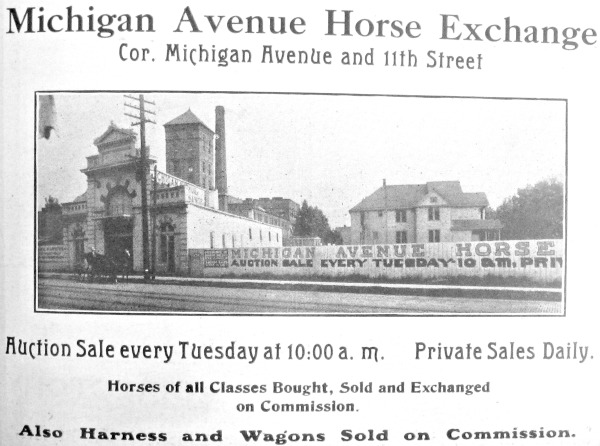
This advertisement for the Michigan Avenue Horse Exchange
appears in the 1906 city directory. The tower and smokestack
in the background are part of the Hamilton Carhartt factory.
The Michigan Avenue Horse Exchange was the last occupant of the former Detroit Zoological Garden. On September 20, 1906, the following ad was printed in the Detroit Free Press classifieds:
FOR SALE. Very cheap, 509 Michigan
ave.; brick, stone, all kinds lumber.
Detroit House Wrecking Co., Grand 1843.


